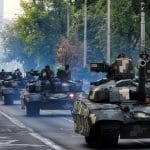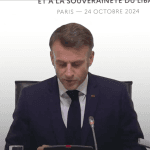The conflict in Sudan has raged for two years, causing immense human suffering, regional instability, arms proliferation and massive displacement of the population. South Sudan and Chad have been put under pressure as they struggle to absorb refugees. The conflict is creating fertile ground for international terrorism, as the Muslim Brotherhood insert themselves into the war on the side of the Sudanese Armed Forces (SAF). Al Qaeda are also taking the opportunity to operate without hindrance in areas of SAF control. With the fighting causing such devastation inside the country and beyond its borders, what hope is there for peace?
The conflict has its roots in a power struggle between the Sudanese Armed Forces affiliated with General Abdel Fattah al-Burhan, and the Rapid Support Forces (RSF), affiliated with General Mohamed Hamdan Dagalo, known as Hemedti. These factions had previously been allied when they cooperated to oust Omar al-Bashir from power in 2019. But subsequent attempts to transition to a democratic civilian-led government were not successful, leading to conflict between RSF and SAF.
The RSF has been somewhat more indicative of openness to peace talks than their opponents. During the summer of 2024, the U.S. invited both sides to peace talks that were scheduled to begin in Switzerland on 14 August 2024. Hemedti confirmed the RSF’s commitment to the peace process, stating that they welcomed the opportunity to negotiate, emphasizing the RSF’s goal of saving lives, stopping the fighting, and paving the way for a peaceful political solution that restores civilian rule and democratic transition in Sudan, thus protecting the rights of the country’s 19 ethnic groups. In contrast, Abdel Fattah al-Burhan said his side would not join those advocating peace, stating: “We will not go to Geneva … we will fight for 100 years.”
More recently, in February 2025, the RSF declared a Government of Peace and Unity in the areas they control. The initiative was described by Hemedti as “a broad coalition that reflects the true face of Sudan.” He explained that the RSF had, with “civil and political forces,” signed a transitional constitution that was a “roadmap for a new Sudan.” That constitution provides for a 15-member presidential council “representing all regions, symbolizing our voluntary unity.”
It is not only the reluctance of the SAF that is hindering any possible peace process. There are multiple foreign actors taking sides in the conflict and supplying arms. Just one example is Iran, widely accepted to be supplying drones and other military equipment to the SAF and using Port Sudan as a hub for providing weapons to their other proxies throughout the region. Another factor is the multiple and competing peace talk platforms. Different platforms host talks, sign agreements and make peace plans, but these are not following through to concrete steps for implementation and the result is increased confusion.
In the meantime, the human cost is enormous. The United Nations has described the conflict as “one of the worst humanitarian nightmares in recent history.” There have been tens of thousands of deaths, millions have been displaced, and parts of the population are starving and vulnerable to disease.
Only a unified international effort can halt the flow of weapons into Sudan and bring the combatants to the negotiating table. “The alternative,” as the International Crisis Group recently put it, “looks hellish. Left unchecked, Sudan’s war will only spread, engulfing more of the country and maybe soon expanding beyond its borders. In that scenario, no one would win, and many would lose.”
Yet, as Suha Musa commented in Foreign Policy as long as a year ago, there is across the international community “the preemptive treatment of Sudan as a deserted nation of no hope [that] continues to permit international entities to absolve themselves of blame or attachment to the conflict.”
Getting the parties around a peace table will take at least three things.
First, a common understanding among the different regional and international actors that whatever their own differences and objectives regarding this conflict, Sudan’s human catastrophe can no longer be countenanced. Second, the major powers in the UN Security Council should let it be known that they would agree on a multilateral halt of weapons supply covering all of Sudan. Third, this is a question of leverage and the political will to apply it: both Europe and the United States have leverage, each in their own way, and need to be prepared to exert it with the immediate actors to whatever degree necessary to ensure their compliance in creating the stabilizing conditions that would open a pathway to peace.
We have, whether we like it or not, entered into a new era in international relations in which leverage is now trumping diplomacy. This may be the only realistic prospect for restoring peace to Sudan.








